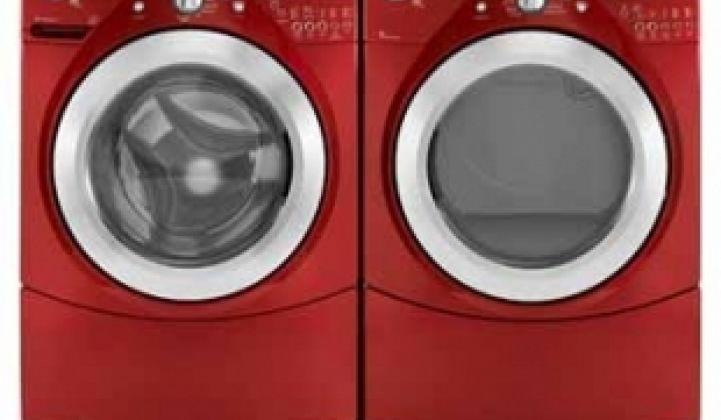Standards -- they’re so boring yet so essential. That is true in every industry, and particularly for energy-intensive products.
Just ten years ago, a clothes washer used double the amount of energy it does today. In the coming years, that figure will again be slashed again, thanks to the new standards released on Wednesday by the U.S. Department of Energy.
The new standards for clothes washers and dishwashers will save consumers an estimated $10 billion in energy and water costs. It has taken years for them to be finalized; it was nearly two years ago that industry groups released final recommendations on the standards. The announcement adds to the nearly 40 different products the Obama administration has updated standards on, along with heavy- and light-duty vehicles.
"Working with consumer, industry and environmental groups to develop common-sense energy-saving appliance standards is an important part of the Obama administration's all-of-the-above approach to American energy and the Energy Department's efforts to reduce energy costs for consumers," DOE Secretary Steven Chu said in a statement.
The standards for clothes washers will go into place in 2015 and dishwasher standards will take effect in 2013. For clothes washers, the new front-loading models will use 15 percent less energy and 35 percent less water, while top-loaders will use one-third less energy and 19 percent less water. The savings will add up to $400 to $600 over the lifetime of the clothes washer, and about $100 for the dishwashers, according to the American Council for an Energy Efficient Economy.
Some appliances, such as dishwashers, have already become so efficient that updating the standard is important, but there is diminishing savings that can be gained.
“Clothes washers will save households as much as 10,000 gallons of water -- the equivalent of taking 250 baths -- every year under these new standards,” Ed Osann, NRDC senior policy analyst, said in a statement. “That’s good news for consumers, our environment and our economy -- and especially for anybody with a houseful of kids.”
The DOE also made changes to the ratings methods by changing the way the tests are conducted. There is now more of a balance between getting accurate results in the lab and testing the products as they might be used in the real world.
For clothes washers, for instance, they have reduced the average number of loads per year as households have grown smaller over the decades and the machine size has increased, according to Andrew deLaski of the Appliance Standards Awareness Project at the ACEEE.
The new tests will also measure for standby power, which has to be 0.08 watts or lower when the products aren’t in use.
Of course, as appliances grow more efficient, the energy hogs in the house (after heating and cooling, that is) continues to be consumer electronics, like televisions and set-top boxes. “There’s been a lot of progress, but there’s more potential,” said deLaski.
Earlier this year, the ACEEE found that appliance standards across commercial and residential sectors could save $1 trillion by 2035 and more than 200 quads of energy. Standards are coming or are being updated for some of the biggest offenders, like set-top boxes, computers and streetlights.
Even with the advancements, it’s a slow roll. Once the standards are put in place, it takes about 14 years for the products to replace older appliances in the home, although items like computers have a shorter lifespan. In the meantime, utilities are just starting to develop residential demand response programs that use either a carrot or stick to encourage people to shift their load to other times of the day. Advancing standards and increasing control features also mean that there is less need for appliances to talk to the grid, at least in the home. If HVAC systems are smart and connected, and appliances are super-efficient, it becomes less important for the latter to be grid-connected.
The good news for utilities is that updated standards can drive down peak demand in homes and businesses overall, although there is always a new technology on the horizon waiting to be plugged in.



